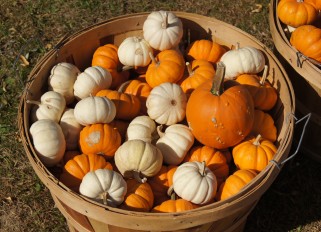Pumpkin

Pumpkin – a bright orange color vegetable, which is home to South America. They can reach up to one meter in diameter and weigh more than 200 kg.
Pumpkin seeds are sown in moist soil warmed to at least 14 degrees Celsius or use seedlings, just hold them a few days outside and bring inside at night before planting in the ground.
There are about 20 species of pumpkins, some of them hybrids and bred specifically for growing plantations, among them there are annual and perennial.
Pumpkin harvesting generally is the first two weeks of September, in dry weather. Signs of maturity are bright coloring and dry stalks. Usually the most delicious pumpkins are small, weighing less than 5 kg, the biggest pumpkins are most often not very juicy and fragrant. The flesh of large pumpkins are usually too dry or watery.
There are summer and winter varieties of pumpkin. Winter varieties differ with thicker skin and firm flesh, so they are more suitable for the preparation of fillings for pies or baking in the oven. Summer pumpkins are tender, juicy and softer, perfect for cooking.
Some sweet pumpkin varieties its better to not cook and instead use raw in vegetable or fruit salads. Make sure to choose a variety of pumpkin that’s intended for cooking rather than for decoration. The ubiquitous field pumpkin – the kind most commonly used to carve jack-o’-lanterns – has watery, stringy flesh. Sugar pumpkins and cheese pumpkins are varieties that are good for cooking and baking.
